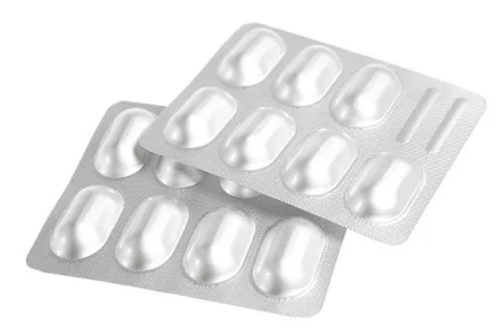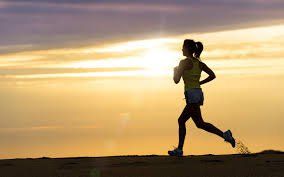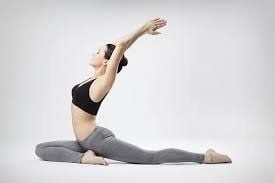This is an automatically translated article.
Yoga is a gentle exercise that is ideal for maintaining back strength and flexibility. It is also one of the more effective tools to help relieve low back pain, the most common source of pain and disability in older adults. Yoga strengthens and stretches tight back muscles, which improves mobility. So the question is: What are the yoga poses for back pain relief?1. Learn the Do's and Don'ts
Practicing yoga is one of the best ways to relieve back pain, especially for people with chronic back pain (low back pain syndrome). However, there are still things you should and shouldn't do during exercise:Don't lose your body's natural lumbar curve. Bent or arched spine, which can be caused by sitting for long hours in an office chair that promotes poor posture, can affect the back. In most yoga poses and throughout your active day, whether sitting or standing, it's important to maintain a natural inward curve in your lower back, keeping the back of your head straight. Line up with the back of the pelvis (do not drop the head forward or backward), to keep the shoulders wide and overlap just above the hips. Although your yoga teacher may recommend exercises that straighten your back (usually to prevent you from losing your natural spine curve by rounding or covering your back), a straight back is not a natural anatomical pose. nature of the body and that really shouldn't be encouraged. Natural curves of the spine — a slight inward curve of the lumbar spine (lower back), an outward curve of the thoracic spine (upper/middle back), and a slight inward curve of the spine. The cervical spine is very important for spine health, so those natural body curves should not be allowed to disappear. Practice healthier sitting and standing positions to help strengthen your back. Practice sitting tall, in a chair, or on the floor with aids like a stack of folding blankets or a yoga tool while being mindful of maintaining the natural curve of your lumbar spine. Use this new pose whenever you sit. When sitting or standing, use core support, with slight lifting of the lower abdomen and pelvic floor, and upward by lengthening the axis (lift) of the spine. Do not let your feet turn outward when standing or walking. For many people, turning the foot outward is both an outcome and a cause of shortening of the piriformis (the culprit of sciatica). When this deep hip rotator is tightened, the psoas (running from the lumbar spine to the top of the thigh) can also become stretched, which can lead to lower back pain. Dove pose should be practiced to help stretch the piriformis muscle. Lie on your back and hug one knee toward the center of your chest or stretch a figure 4, crossing one ankle over the thigh of the opposite bent leg. For tight psoas, bridge pose is supported with a yoga block placed under your pelvis and practiced with a high or low back (anjaneyasana) and a slight forward (forward) tilt of the pelvis. useful. Keep your feet parallel. If your toes tend to turn outward, move your heels outward enough that they are behind your toes. You want the second toes of each foot to be relatively parallel to each other and your knees in a direction that aligns with the center of gravity of your foot. Do this move while standing (whether in mountain pose, when working on a standing desk, or any other time), walking, or sitting. Do not bend from a forward bend with your legs straight. This action can compress the discs of the anterior spine and worsen back pain. Stand up from a forward bend with knees slightly bent and use body support (coming from the slight engagement of the pelvic floor and lower abdomen) as you lift your torso. Core strengths should not be forgotten. Yoga sequences often focus more on muscle tension than strength. Stretching can be great for relieving tension in the back muscles and poses that we can combine with a nice stretch like marjaryasana (cat-cow), balasana (child pose), ananda Balasana (happy baby) and back twists can feel good, but they don't contribute much to building core strength, which is important for back health. To strengthen the structure as well as keep the back shape, we must balance the support in the front. That's why poses that combine abdominal and back strength are so important for back health.

Bạn cần nhớ kỹ những lưu ý nên và không nên khi tập yoga trị đau lưng
Back care means developing healthy posture and movement habits, and practicing postures and exercises that can build muscle strength that help keep your spine comfortable. Now, experts are even starting to recommend these yoga practices instead of medication for temporary or chronic low back pain, so if you have back pain, give some a try. yoga for people with back pain that we present below (with the consent of doctors, of course).
2. Yoga poses for people with back pain
2.1. Cat Crawling This gentle, accessible back bend stretches and exercises the spine. Practicing this pose also stretches your torso, shoulders, and neck.The steps to do this pose include:
Walk on all fours. Place your wrists below your shoulders and your knees below your hips. Balance the weight evenly between all four points. Inhale as you look up and drop your belly down toward the mat. Exhale as you tuck your chin into your chest, draw your navel toward your spine, and arch your spine toward the ceiling. Maintain body awareness as you do this move. Focus on noticing and releasing tension in your body. Continue like this for at least 1 minute. 2.2. Face Down This traditional forward bend can help restore and rejuvenate the body. When practicing this pose can help you relieve back pain and sciatica. It helps to resolve imbalances in the body and improves strength.
The steps to do this pose include:
Walk on all fours. Place your hands in line under your wrists and knees under your hips. Press your hands inward, bring your toes down, and lift your knees. Bring the pelvis up towards the ceiling. Keep a slight bend in the knees and lengthen the spine and tailbone. Keep heels slightly off the ground. Press firmly on the arm. Distribute the weight evenly on both sides of the body, paying attention to the position of the hips and shoulders. Keep your head in line with your upper arms or slightly lift your chin. Hold this position for up to 1 minute. 2.3. Extended Triangle This classic standing pose can help relieve back pain, sciatica, and neck pain. It stretches your spine, hips, and groin, and strengthens your shoulders, chest, and legs. It can also help reduce mental stress and anxiety.
The steps to do this pose include:
From standing, step one foot up about 1.2m from the other. Rotate right toes forward and left toes out perpendicular. Raise arms parallel to the floor with palms facing down. Lean forward and rotate your right hip to bring your arms and torso forward. Bend over and touch your feet, floor, or yoga mat. Extend your left arm toward the ceiling. Look forward or look down. Hold this position for up to 1 minute. Repeat on the opposite side. 2.4. Sphinx Pose This gentle back bend helps strengthen your spine and buttocks. It stretches the chest, shoulders and abdomen. It can also help reduce stress.
Here are the steps to perform this pose include:
Lie on your stomach, legs extended behind. Exercise the muscles in the lower back, buttocks, and thighs. Bring your elbows under your shoulders, forearms on the floor, and palms facing down. Slowly raise your upper body and head up. Gently lift and contract your lower abdomen to support your back. Make sure you're lifting up through your spine and out through the top of your head, rather than falling into your lower back. Keep your gaze straight ahead as you fully relax in this pose, while remaining active and engaged. Stay in this position for up to 5 minutes.

Tư thế nhân sư được đánh giá là giúp giảm đau lưng hiệu quả
The steps to do this pose include:
Lie on your stomach, place your hands under your shoulders and fingers facing forward. Pull your arms tightly to your chest. Do not allow elbows to point to the side. Press into your hands to slowly lift your head, chest, and shoulders. You can lift half, halfway, or all the way up. Maintain a slightly bent elbow. You can drop your head back to create a deeper pose. Lower your back to the mat as you exhale. Bring your arms by your side and rest your head. Slowly move your hips from side to side to release tension from your lower back. 2.6. Locust This gentle back bend can help relieve back pain and fatigue. It strengthens the back torso, arms and legs.
The steps to do this pose include:
Lie on your stomach with your arms next to your body and palms facing up. Touch your big toes together and turn your heels to the side. Gently rest your forehead on the floor. Slowly raise your head, chest, and arms halfway, halfway, or all the way up. You can interlock your hands and interlace your fingers behind your back. To improve the posture, the practitioner can lift the legs. Look straight ahead or slightly upward as you lengthen the nape of your neck. Hold this position for up to 1 minute. Rest before repeating the pose. 2.7. Bridge Pose This is a backstroke and inversion that can be stimulating or restorative. It lengthens the spine and it can relieve back pain and headaches.
The steps to do this pose include:
Lie on your back, knees bent and heels pulled into the sitting bones. Place the arms along the body. Press your feet and arms into the floor as you lift your tailbone. Continue lifting until thighs are parallel to the floor. With arms still, bring palms together with interlaced fingers under hips or place hands under hips for support. Hold this position for up to 1 minute. Release by slowly rolling your back spine to the floor, vertebrae away. Drop your knees together. Relax and breathe deeply with this pose. 2.8. Fishman Pose This twist energizes your spine and helps relieve back pain. It stretches the hips, shoulders and neck. This pose can help relieve fatigue and stimulate internal organs.
Steps to do this pose include:
From a sitting position, draw your right leg closer to your body. Bring the left foot to the outside of the right foot. Lengthen your spine as you twist to the left. Bring your left hand to the floor behind you for support. Move the upper right arm to the outside of the left thigh, or wrap the elbow around the left knee. Try to keep the hips square to give depth to the spine. Turn your gaze over your shoulders. Hold this position for up to 1 minute. Repeat on the other side.

Tư thế yoga trị đau lưng người cá giúp người tập giảm bớt mệt mỏi
The steps to do this pose include:
Lie on your back with your knees drawn to your chest and arms extended to the side. Slowly lower your leg to the left while keeping your knees as close together as possible. You can place a pillow under both knees or in between the knees. You can use your left hand to gently press down on your knee. Keep your neck straight or rotate to the sides. Focus on breathing deeply in this pose. Hold this position for at least 30 seconds. Repeat on the opposite side. 2.10. Child's Pose Child's Pose is the perfect way to relax and release tension in the neck and back. The spine is also lengthened in this pose. It also helps stretch your hips, thighs, and ankles. The practice of this pose can help relieve stress and fatigue.
The steps to do this pose include:
Sit on your heels and bring your knees together. You can use a pad or blanket under your thighs, torso, or forehead for support. Bend forward and place your hands in front of you. Place your forehead gently on the floor. Keep arms extended in front of you or bring arms along body with palms facing up. Focus on releasing tension in the back as the upper body puts pressure on the knees. Stay in this position for up to 5 minutes. Although many recent studies support yoga as a way to treat back pain, it may not be right for everyone. Talk to your doctor or professional before starting any new yoga or exercise program. They can help identify any possible risks and help track your progress. You can start practicing at home with just 10 minutes a day through books, articles, and online classes for hands-on instruction. Once you've learned the basics, you can practice the poses on your own. You can also find yoga classes. Instructors in those classes will guide you through the best back exercises.
Please dial HOTLINE for more information or register for an appointment HERE. Download MyVinmec app to make appointments faster and to manage your bookings easily.
Reference source: yogainternational.com












